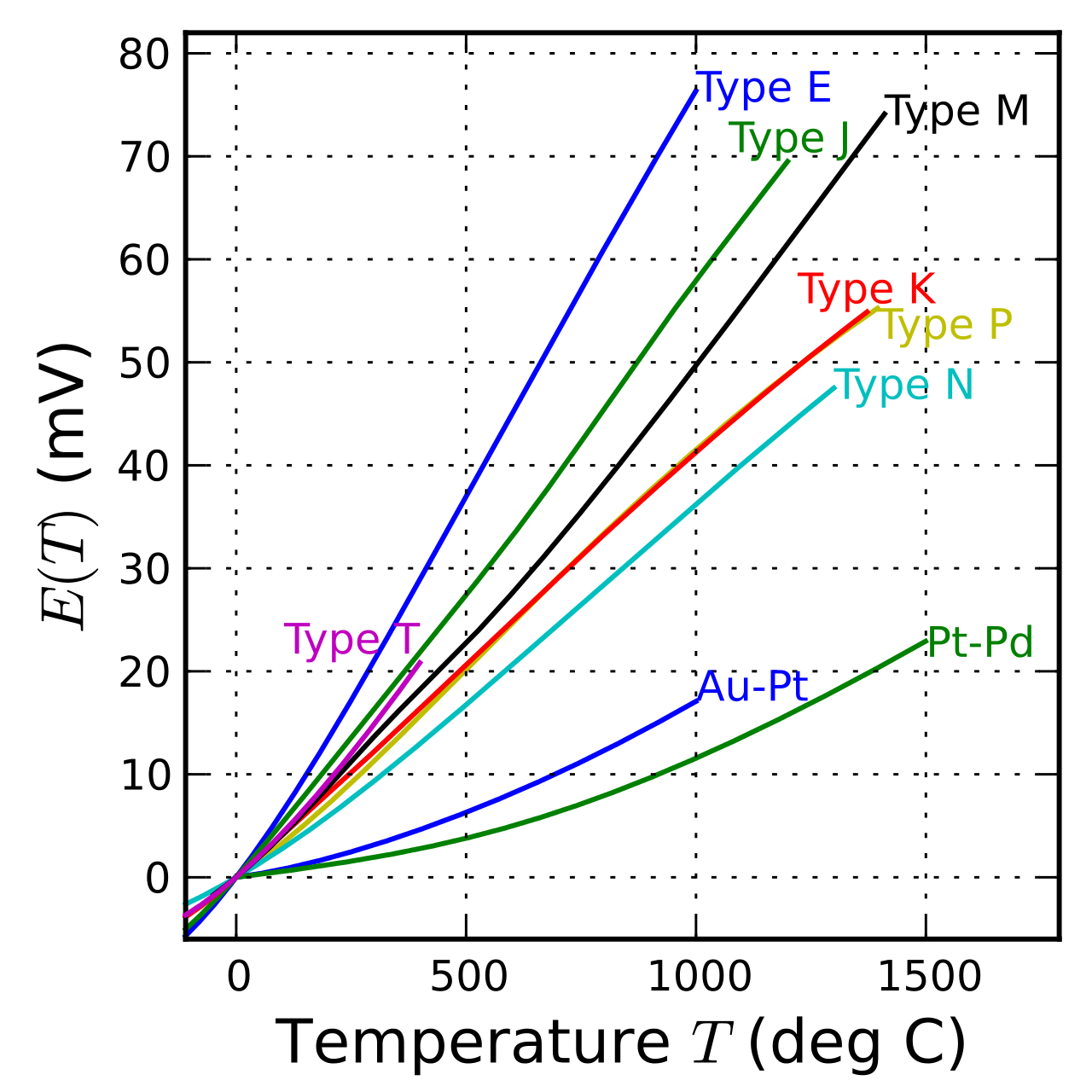Thermocouple description¶
Thermocouple setup¶
Thermocouples are based on the thermoelectric effect discovered 1821 from Thomas Johann Seebeck. That effect results in a temperature dependent electrical voltage between two electrical conductors. This small voltage (~10uV per 1°C) can be measured and interpreted to get the current temperature on the measuring tip.
Different types are available with a difference in the temperature coefficient and temperature range as a result of changing the two electrical conductors.

Measurement¶
Simply measure the output voltage from the thermocouples and calculate with the temperature coefficient the current temperature. This is the main application of that setup. Today the industry delivers also components to read out directly the current temperature with compensating the current temperature of the connections to reduce noise and measurements faults, as here used with the digital channel.
As it is a small analog voltage, with an Analog-Digital-Converter (ADC) you can measure the current voltage and transform it into the digital world, as it is used at the end of the analog channel.
But before the signal can be measured for both channels, the signal must be filtered to reduce noise and measurement faults with the general input filter.